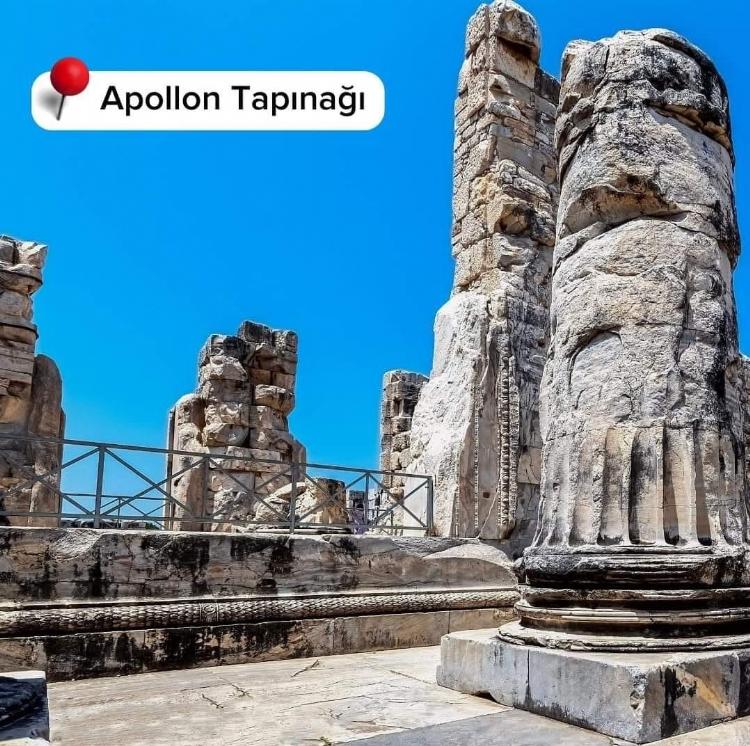
he Didyma Apollo Temple, one of the most significant prophecy centers of the ancient world, is located in the city center of Didim district in Aydın Province. It served as the sanctuary of the ancient city of Miletus and was originally connected to the Temple of Apollo, which was a prophecy center for notable cities such as Ephesus and Priene within the Ionian city-states. Unlike a typical ancient city, Didyma was a holy place rather than a city itself.
The earliest written source about Didyma comes from Herodotus. According to him, after Alexander the Great took control of Miletus and assigned the temple's management to the city, the local people declared him the son of Zeus. Under Iskaer’s guidance, the temple acquired its current form.
Today, the temple is surrounded by 124 columns arranged in two rows on a platform accessible by steps on all four sides. The temple was originally destroyed by the Persian army in 494 BC but began reconstruction after Alexander the Great liberated the region from Persian control. This reconstruction continued until the mid-2nd century AD, although it was never fully completed. The dimensions of the temple, which took its current form during this period, are approximately 109 x 51 meters. The central "Sella Sacred Space," measuring 53 x 21 meters, is now used for concerts and art events.
At the entrance of the temple garden stands the famous Medusa head, which has become a symbol of Didim. The town of Didim, known for this monumental temple, is a small seaside resort in Aydın Province. The ruins of the Temple of Apollo, Didymaion, welcome visitors with their historical significance and architectural splendor. Despite its unfinished state, the temple is recognized as one of the largest temples of the Hellenistic world, comparable to the Temple of Artemis in Ephesus or the Heraion at Samos. The Temple of Apollo was famed as a prophecy center, similar to Delphi in Anatolia, and was connected to Miletus by a sacred road approximately 19 kilometers long.
The surrounding area, now known as the Hisar neighborhood, was historically significant with old houses, some of which are registered historical structures. Many of these houses are awaiting restoration, preserving the architectural heritage of the 19th century. Visitors are encouraged to enjoy the sunset by the temple, imagining the historical atmosphere of construction workers and pilgrims who once flocked to this sacred site to seek prophecies and offer sacrifices to Apollo.
Book a unique Didyma Apollo Temple right now.